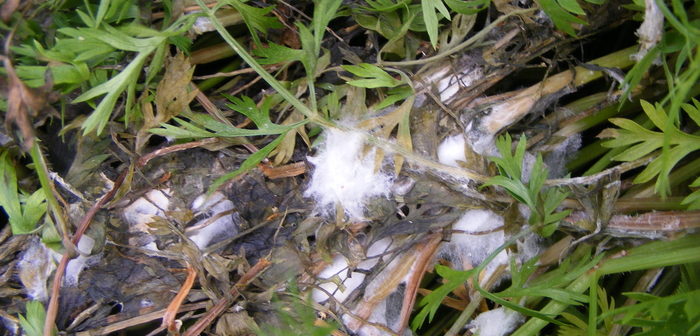Sclerotinia is a very serious disease of carrots, affecting yield and quality. Growers are able to use an effective fungicide such as Signum (pyraclostrobin and boscalid) at the right time with the help of the BASF/ADAS carrot monitoring system, which starts at the beginning of June and can be found in the vegetable section on www.agriCentre.basf.co.uk.
The ADAS/BASF Sclerotinia Monitoring Service monitors patterns of sclerotial germination each week for ten weeks from June through to August and this helps assess disease risk and fungicide timing.
“It is important to keep an eye on disease pressure as crops develop and conditions encourage disease. Growers can log on weekly to see the extent of sclerotial germination activity and read a report on disease pressure, drafted by ADAS Research Scientist Dr. Caroline Young. “Depots of carrot sclerotia are monitored at two carrot growing sites, one in Nottinghamshire and the other in Cambridgeshire, as well as in some cereal crops.”
She explains that sclerotia germinate when the soil is moist and soil temperatures reach approximately 8-10°C. They release airborne spores which infect carrot crops. “We need to wait to see what the weather does in July and August to gauge the level of risk this year.If soils are moist, germination starts before closure of canopy. Therefore growers should start their fungicide application early,before the canopy closes over, which is usually between mid-June to late July. Once Sclerotiniais established in the crop, it is almost impossible to get on top of it.
Many growers apply four fungicides in a programme, often targeting Alternaria at the same time and alternating products with different modes of action to minimise resistance risk, starting the programme before canopy closure,” says Caroline.
Matthew Goodson of BASF says that Signum is fully approved in carrots and provides broad-spectrum disease control of Sclerotinia, Alternariaand powdery mildew when used as a protectant fungicide. “To get the best from this product, it should be placed at the base of the plant before canopy closure and when the ground is still visible. This is because infection starts when old leaves come into contact with the ground. The Sclerotiniafungus invades diseased, senescing or decaying leaves of the carrot crop, particularly those in contact with the soil. Roots are infected via the leaf petioles and through the crown. Starting the control programme before the canopy closes over is essential. A closed canopy will shield the base of the plant from fungicide sprays,” he says.
“Controlling Sclerotinia can be achieved by applying an effective fungicide programme, alternating fungicides with different modes of action, and with timing being provided by the ADAS/BASF predictive system looking at disease risk and pressure. These components work together to improve overall disease control,” says Matthew.




